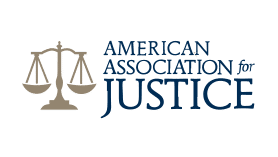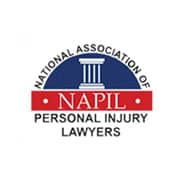If you were injured on your motorcycle, you already know the unfair assumptions people make. There’s a persistent bias that motorcyclists are inherently reckless, that the person on two wheels must be the one at fault.
This bias might start at the crash scene and seep into the entire insurance claim process, making it harder for you to be treated fairly.
But a stereotype is not the law. Oklahoma law gives you the right to hold a careless driver accountable for the harm they cause. Being on a motorcycle does not make you responsible for a collision you didn’t cause. An injury claim is your tool for securing the financial stability needed to piece your life back together—to pay for medical treatment, cover lost income, and account for how the crash has altered your life.
At Carr & Carr, our Tulsa motorcycle accident lawyer handles the legal process so you can direct your energy toward healing. If you or a family member was hurt in a motorcycle crash, call us for a free discussion about your situation at (918) 747-1000.
How We Handle Your Case

Our approach is built on direct, personal guidance. We have focused on helping injured Oklahomans for decades, and we have a clear process designed to lift the burden from your shoulders.
Here’s what that looks like:
- A Free, Clear Case Assessment: We will listen to what happened and give you a straightforward evaluation of your legal options, at no cost or obligation to you.
- You Pay Nothing Unless We Recover for You: We work on a contingency fee basis. It’s a simple arrangement: if we don’t secure a financial recovery for you, you owe us nothing.
- Direct Communication:We make sure your questions are answered and you know what’s happening at every stage.
As a local Tulsa firm, we are part of this community. Our office is located at 4416 S Harvard Ave., easily accessible off the I-44. We know the courts, the procedures, and how area insurance providers operate. This familiarity allows us to build a strategy tailored to the realities of your specific case.
What Compensation Is Available After a Motorcycle Crash?
A personal injury claim aims to provide the resources necessary to cover your losses. While money can’t erase the event, it can provide the stability needed for a full recovery.
These losses are typically grouped into three distinct categories.
Economic Damages: The Measurable Costs
Think of these as every concrete financial loss that resulted from the crash. We work to account for every dollar the accident has cost you, both now and in the future.
This includes:
- All Medical Care: From the ambulance ride and ER visit to ongoing physical therapy, future surgeries, medications, and any necessary medical equipment.
- Lost Income: The wages you’ve lost while being unable to work.
- Diminished Earning Capacity: If your injuries permanently affect your ability to do your job or earn a living.
- Property Damage: The funds to repair or replace your motorcycle, helmet, and other damaged riding gear.
Non-Economic Damages: The Personal Impact

These damages are intended to acknowledge the profound, personal ways the injury has affected your quality of life.
This includes:
- Pain and Suffering: For the physical pain and emotional distress your injuries have caused.
- Mental Anguish: This can include anxiety, depression, or post-traumatic stress stemming from the crash.
- Disfigurement and Scarring: For permanent changes to your appearance.
- Permanent Impairment: If the injury leaves you with a long-term physical limitation that changes how you live your life.
Punitive Damages: Holding Reckless Parties Accountable
In rare circumstances where the at-fault driver acted with extreme disregard for the safety of others, Oklahoma law may permit punitive damages. These are not designed to repay a loss but to punish the wrongdoer and discourage similar conduct. The evidence required to justify these damages is substantial, and they are not awarded in most cases.
The Realities of Riding in and Around Tulsa
A motorcycle accident can occur anywhere, but certain locations in Tulsa consistently see more crashes due to traffic density, road layout, and predictable driver behaviors.
Oklahoma Motorcycle Crash Facts
The Oklahoma Highway Safety Office reports that our state sees a consistently high number of motorcycle wrecks. In one recent year alone, nearly 1,300 motorcycle collisions occurred, leading to 76 fatalities and almost 1,000 injuries. A large portion of these crashes happen when another vehicle violates the motorcyclist’s right-of-way.
Common Tulsa Accident Hotspots:
- Major Intersections: Busy crossings like 71st and Memorial or 41st and Yale are common locations for left-turn accidents, where a car turns directly into the path of an oncoming bike.
- Highway Merges: The on-ramps and off-ramps for I-44, US-75, and the Broken Arrow Expressway are prime spots for blind-spot collisions as cars change lanes without looking.
- The Inner Dispersal Loop (IDL): Downtown Tulsa’s loop features tight curves and requires constant merging, a recipe for trouble when other drivers are distracted.
- Surrounding Rural Roads: Roads in Tulsa County and beyond can present their own challenges, including poor lighting, unmarked hazards, or loose gravel that can be treacherous for a rider.
Why Do These Crashes Happen?
- Rush Hour Traffic: The morning and evening commutes are when traffic is most congested, increasing the odds of a collision.
- Weather: Sudden rain can make roads slick and reduce visibility. The intense summer sun can create a glare that effectively hides a motorcycle from a driver’s view.
- Distracted Driving: The single greatest factor we see is driver inattention. A person looking at a phone instead of the road is a danger to everyone, but for a motorcyclist, that brief moment of distraction can be catastrophic.
Key Factors in a Motorcycle Accident Claim
Common Causes of Motorcycle Accidents:

- Left-Turn Collisions: A driver turning left at an intersection fails to see an approaching motorcycle and cuts directly into its path. This is one of the most frequent causes of serious injury.
- Unsafe Lane Changes: A car or truck merges into a lane without checking its blind spot, moving into the space a motorcyclist already occupies.
- Rear-End Impacts: A rider stopped in traffic is struck from behind by a driver who isn’t paying attention.
- “Dooring”: A person in a parked car opens their door into the lane of traffic, giving an approaching rider no time to react.
- Road Hazards: These are single-vehicle incidents caused by dangerous conditions like large potholes, unmarked construction zones, or debris in the roadway. In these cases, a government body or a contractor may be responsible.
Devastating Injuries We See in These Cases:
- Traumatic Brain Injuries (TBI): Even with a quality helmet, the impact forces in a crash can cause concussions and other serious brain trauma.
- Spinal Cord Injuries: Damage to the spinal cord can lead to partial or total paralysis, permanently altering every part of a person’s life.
- Road Rash: This injury is far more than a simple scrape. Severe road rash can destroy multiple layers of skin, cause dangerous infections, and result in permanent, disfiguring scars.
- Broken Bones: Riders frequently suffer multiple fractures, especially to the legs, arms, wrists, and ribs.
- Internal Injuries: The blunt force of a collision can damage internal organs, and these injuries may not be obvious right away.
How Fault Is Determined: Oklahoma’s Comparative Negligence Rule
Oklahoma follows a legal doctrine called “modified comparative negligence.” In simple terms, it means you can recover damages even if you were partially at fault, but only if your percentage of fault is 50% or less.
For instance, if a jury decides you were 10% to blame for the crash, your final compensation award would be reduced by that 10%. However, if you are found 51% or more at fault, you are barred from recovering anything. Insurance companies are very familiar with this rule and will often try to shift blame to the motorcyclist to reduce what they have to pay.
Dealing with the Insurance Company
It’s important to understand their business model. They are for-profit companies with a primary duty to their shareholders, which means their goal is to resolve your claim for the smallest amount possible.
To achieve this, adjusters may use a standard playbook. We anticipate these moves and manage all communications to shield you from them.
Common Insurance Company Approaches:
- Pressing for a Recorded Statement: An adjuster will likely call and ask you to provide a recorded statement about what happened. This seems routine, but the goal is often to get you to say something that can be used to undermine your claim, like downplaying your pain or accidentally accepting some blame. We always advise our clients not to give a statement without us.
- Making a Quick, Lowball Offer: An offer might come just days after the crash. When you’re out of work and bills are coming in, this is tempting. But these early offers are almost never account for the full, long-term costs of a serious injury, like future medical needs or lost earning ability.
- Using Delays to Create Pressure: Adjusters need a lot of documentation and must follow strict internal protocols. If you get frustrated or desperate as bills are piling up, they won’t complain if you choose to accept a lower offer.
- Questioning Your Injuries: The adjuster may comb through your medical records, looking for any reason to argue your injuries aren’t as severe as you and your doctor say they are. They may even have their own doctor conduct a brief exam designed to produce a report that contradicts your treating physician’s findings.
- Shifting Blame: This is the most common approach in motorcycle cases. The adjuster will look for any opportunity to assign fault to you. They might question your speed or your position on the road—anything to invoke Oklahoma’s comparative negligence rule and reduce their payout.
Practical Steps to Protect Your Claim

While our team manages the legal strategy, there are things you can do to help strengthen the foundation of your case. These actions create a clear, undeniable record of what you’ve been through.
Follow Your Doctor’s Orders Precisely:
Attend every single medical appointment, physical therapy session, and follow-up. If you stop treatment or miss appointments, the insurance company will argue it’s proof that your injuries weren’t that serious to begin with.
Keep a Simple Daily Journal:
Witness memories are like ice cubes melting in the sun. A written record is durable. Each day, jot down a few notes about your physical and emotional state. Note the pain that flares up on cold mornings, the activities you used to enjoy but can no longer do, or the frustration of depending on others. This journal is powerful evidence of your non-economic damages.
Save Every Piece of Paper:
Create a folder and keep every single receipt related to the crash. This isn’t just for major medical bills; it includes prescription co-pays, gas mileage for trips to the doctor, and any other out-of-pocket expense.
Obtain the Official Police Report:
The police report contains the officer’s initial findings on fault, contact information for witnesses, a diagram of the scene, and other key details. We can get this for you, but having it early is always helpful.
Go Silent on Social Media:
Assume the insurance adjuster will be looking at your social media profiles. A single photo of you smiling at a family barbecue can be taken out of context and used as “evidence” that you aren’t really hurt. The safest move is to stop posting publicly until your case is fully resolved.
Frequently Asked Questions About Tulsa Motorcycle Accidents
What if I wasn’t wearing a helmet? Can I still file a claim?
Yes. In Oklahoma, riders aged 18 and over are not legally required to wear a helmet. Because it isn’t mandatory, the fact that you weren’t wearing one cannot be used to claim you were at fault for the crash itself. However, if you suffered a head injury, the insurance company will likely argue that the injury would have been less severe with a helmet. This is a technical argument we are prepared to address.
How long do I have to file a motorcycle accident lawsuit in Oklahoma?
In most cases, you have two years from the date of the accident to file a lawsuit. This deadline is set by Oklahoma’s statute of limitations. If you miss this deadline, you permanently lose your right to seek compensation. It is important to note that if your claim is against a city, county, or state government entity (for example, due to a dangerous road condition), the deadline is much shorter. Under the Oklahoma Governmental Tort Claims Act, you must give formal notice of your claim within one year.
What happens if the driver who hit me was uninsured or fled the scene?
If you were the victim of a hit-and-run or were hit by a driver with no insurance, you can typically turn to your own auto insurance policy. The Uninsured/Underinsured Motorist (UM/UIM) coverage you pay for is designed for this exact scenario. We can review your policy to determine the coverage available and handle the claim with your own insurance company.
Will my case go to court?
The vast majority of personal injury cases—more than 95%—are resolved through a settlement, without ever going to trial. Our primary goal is to build such a thorough and convincing case that the insurance company makes a fair settlement offer. However, we prepare every case from day one as if it will ultimately be decided by a jury. If the insurer refuses to be reasonable, we are always ready for trial.
Your Recovery Is the Priority
Let us manage the details and fight for the compensation you need, so you can focus all of your energy on healing. Our experienced Tulsa personal injury lawyer is here to guide you every step of the way. For a free, confidential conversation about your case, call our Oklahoma personal injury lawyers today at (918) 747-1000.
Carr & Carr Injury Attorneys – Tulsa Office
Address: 4416 S Harvard Ave, Tulsa, OK 74135
Contact No: 866-510-0580

